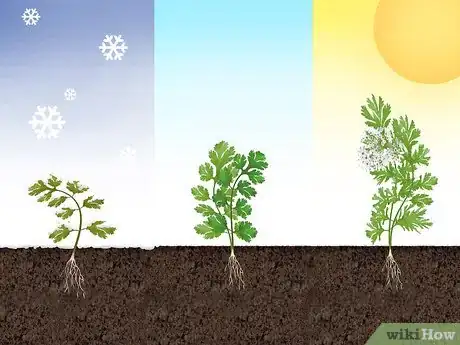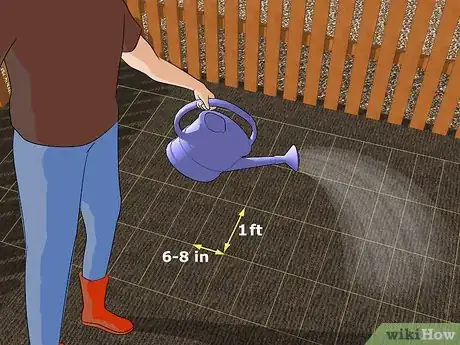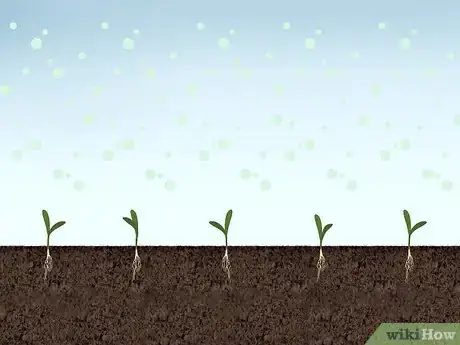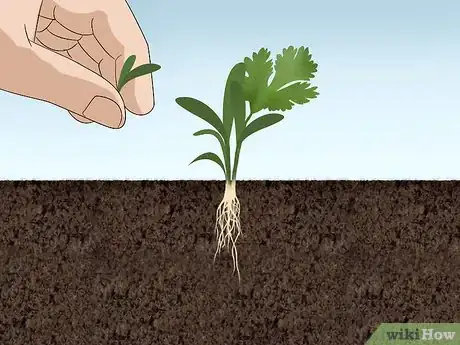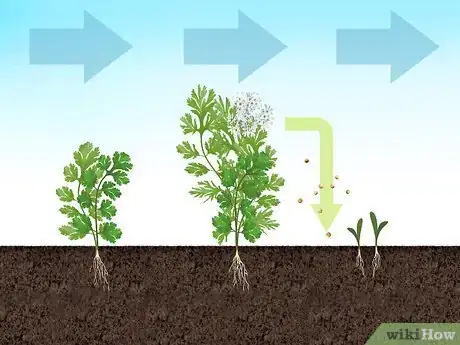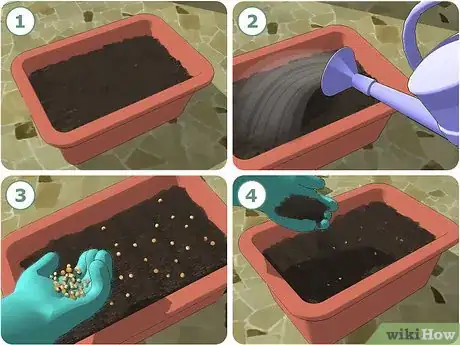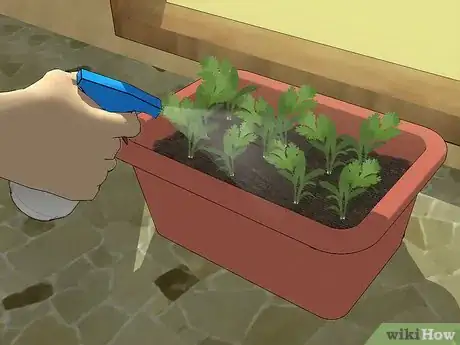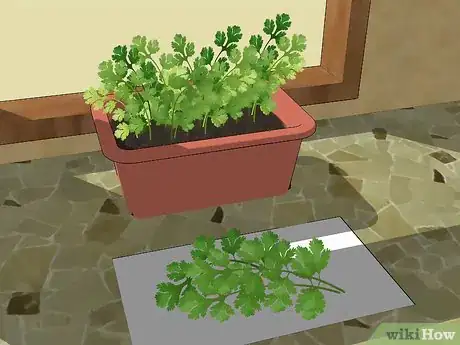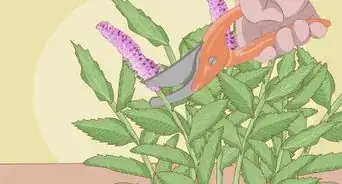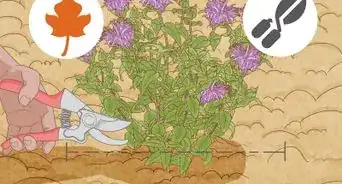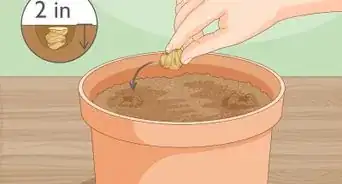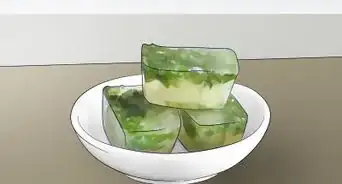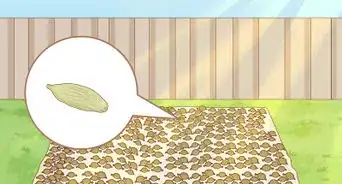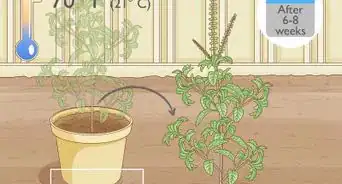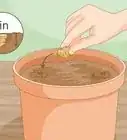This article was co-authored by Andrew Carberry, MPH. Andrew Carberry is a Food Systems Expert and the Senior Program Associate at the Wallace Centere at Winrock International in Little Rock, Arkansas. He has worked in food systems since 2008 and has experience working on farm-to-school projects, food safety programs, and working with local and state coalitions in Arkansas. He is a graduate of the College of William and Mary and holds a Masters degree in public health and nutrition from the University of Tennessee.
There are 9 references cited in this article, which can be found at the bottom of the page.
wikiHow marks an article as reader-approved once it receives enough positive feedback. This article received 35 testimonials and 91% of readers who voted found it helpful, earning it our reader-approved status.
This article has been viewed 1,033,481 times.
Cilantro (Coriandrum sativum) is an herb with savory, deep green leaves that are harvested fresh and used to flavor a variety of Asian and Latin dishes. It is also known as coriander or Chinese parsley. Cilantro isn't difficult to grow, and the seeds can be planted directly in the soil as soon as all danger of frost has passed or they can be grown in a pot. Here's how.
Steps
Growing Cilantro in a Garden
-
1Choose the time of year. The best time to plant cilantro depends on where you live. Cilantro won't survive in frosty conditions, but it doesn't like extreme heat either. In temperate climates, the best time to start planting cilantro is in late spring, between the months of March and May (Northern Hemisphere). In more tropical climates, cilantro will grow better during cooler, dry times of year, such as fall.[1]
- You may also have success by planting cilantro late in the summer and allowing it to grow into the fall.
- If the weather becomes too hot, the cilantro plants will start to bolt - which means they will flower and go to seed, so choose your time of year wisely.[2] To get a head start on the weather, try starting your seeds indoors and then transfer them outside as the weather improves.
-
2Prepare a spot in your garden. Select a patch of soil where the cilantro will get full exposure to the sun. It will tolerate some shade in southerly areas where the sun gets very hot during the day. The soil should be light and well-drained with a pH of 6.2 to 6.8.[3]
- If you wish to cultivate the soil before planting, use a shovel, rototiller or spade to work 2 to 3 inches (5.1 to 7.6 cm) of an organic mulch such as compost, rotten leaves or manure into the top layer of soil. If you are using manure, make sure the manure is composted or aged for at least 3 months so it doesn't burn the young plants. Rake the area smooth before planting.
Advertisement -
3Plant the cilantro seeds. Sow the seeds about 1⁄4 inch (0.6 cm) deep, spaced 6 to 8 inches (15.2 to 20.3 cm) apart, in rows approximately 1 foot (0.3 m) apart. Cilantro seeds need plenty of moisture to germinate, so make sure to water them frequently. They need about an inch of water per week. They should germinate in about 2 to 3 weeks.[4]
- As cilantro grows so quickly, you should plant a new batch of seeds every 2 to 3 weeks to ensure that you have a fresh supply of cilantro throughout the growing season.
-
4Care for the cilantro. Once the seedlings have reached about 2 inches (5.1 cm) in height, you can fertilize them with compost or organic fertilizer. Be careful not to over-fertilize, you only need about 1/4 of a cup for every 25 feet (7.6 m) of growing space.
- Once the plants have established themselves, they do not need as much water. You should aim to keep the soil damp, but not soggy, as cilantro is a dry climate herb.[5]
-
5Prevent overcrowding. Stop the cilantro plants from becoming overcrowded by thinning the seedlings when the cilantro is 2 to 3 inches (5.1 to 7.6 cm) tall.[6] Pull out the smaller plants and leave the strongest ones to grow larger, allowing 8 to 10 inches (20.3 to 25.4 cm) between each plant. The smaller plants can be used in cooking and eaten.[7]
- You can also prevent weeds from growing by spreading some mulch around the base of the plants as soon as they are visible above the soil.
-
6Harvest the cilantro. Harvest cilantro by cutting off individual leaves and stems from the base of the plant, near ground level, when the stems are 4 to 6 inches (10.2 to 15.2 cm) tall. Use the fresh, new shoots in cooking, not the older, ferny-type leaves which can taste bitter.[3]
-
7Decide whether or not you want to leave the cilantro plants to flower. Sooner or later the coriander plants will start to flower. When this happens, the plant will stop producing fresh, new shoots with edible leaves. At this point, some people cut off the flowers in the hopes that the plant will produce more leaves.[9]
- However, if you would also like to harvest coriander seeds from the plant you should leave it to flower. Once the flower dries, you will be able to harvest coriander seeds that can be used in cooking.
- Alternatively, you can allow the seeds to naturally fall to the ground where the cilantro plant will self-sow, providing you with more cilantro plants the following growing season.[10] You can also save the dried seeds and plant them the next growing season.
Growing Cilantro in a Pot
-
1Select an appropriate pot. Choose a flower pot or container that's at least 18 inches (45.7 cm) wide and 8 to 10 inches (20.3 to 25.4 cm) deep. Cilantro does not take kindly to being moved, so the pot needs to be big enough to contain the full grown plant.[11]
-
2Plant the seeds. Fill the pot with some fast-draining soil. You can mix in some fertilizer too, if you like. Moisten the soil with a little water until it's just damp, not soggy. Sprinkle the seeds lightly over the soil to disperse evenly. Cover with another 1⁄4 inch (0.6 cm) of soil.
-
3Place the pot in a sunny spot. Cilantro needs full sun to grow, so place it in a sunny window-sill or conservatory. South-facing windows offer the most light and best growing conditions for cilantro. The seeds should germinate within 7 to 10 days.[11]
-
4Keep moist. Keep the soil moist using a spray bottle to lightly mist the soil. If you pour water onto the soil, it might displace the seeds.[12]
-
5Harvest the cilantro. Once the stems of the cilantro reach 4 to 6 inches (10.2 to 15.2 cm) in length, it is ready to be harvested. Cut up to 2/3 of the leaves each week, as this will encourage the plant to keep growing. This way, it is possible to harvest four crops of cilantro from a single pot.[11]
Expert Q&A
Did you know you can get expert answers for this article?
Unlock expert answers by supporting wikiHow
-
QuestionI have been growing cilantro but when the plants reach about two inches tall they fall over. Why is this?
 Andrew Carberry, MPHAndrew Carberry is a Food Systems Expert and the Senior Program Associate at the Wallace Centere at Winrock International in Little Rock, Arkansas. He has worked in food systems since 2008 and has experience working on farm-to-school projects, food safety programs, and working with local and state coalitions in Arkansas. He is a graduate of the College of William and Mary and holds a Masters degree in public health and nutrition from the University of Tennessee.
Andrew Carberry, MPHAndrew Carberry is a Food Systems Expert and the Senior Program Associate at the Wallace Centere at Winrock International in Little Rock, Arkansas. He has worked in food systems since 2008 and has experience working on farm-to-school projects, food safety programs, and working with local and state coalitions in Arkansas. He is a graduate of the College of William and Mary and holds a Masters degree in public health and nutrition from the University of Tennessee.
Food Systems Expert
-
QuestionCan coriander live in the same pot as thyme?
 Andrew Carberry, MPHAndrew Carberry is a Food Systems Expert and the Senior Program Associate at the Wallace Centere at Winrock International in Little Rock, Arkansas. He has worked in food systems since 2008 and has experience working on farm-to-school projects, food safety programs, and working with local and state coalitions in Arkansas. He is a graduate of the College of William and Mary and holds a Masters degree in public health and nutrition from the University of Tennessee.
Andrew Carberry, MPHAndrew Carberry is a Food Systems Expert and the Senior Program Associate at the Wallace Centere at Winrock International in Little Rock, Arkansas. He has worked in food systems since 2008 and has experience working on farm-to-school projects, food safety programs, and working with local and state coalitions in Arkansas. He is a graduate of the College of William and Mary and holds a Masters degree in public health and nutrition from the University of Tennessee.
Food Systems Expert
-
QuestionHow can I make sure my cilantro grows okay in the cold?
 Community AnswerCilantro is naturally very resistant to the cold, it can easily handle temperatures ranging even to the low/mid 20s Fahrenheit.
Community AnswerCilantro is naturally very resistant to the cold, it can easily handle temperatures ranging even to the low/mid 20s Fahrenheit.
Things You'll Need
- Shovel, rototiller or spade
- Organic matter
- Cilantro seeds
- Watering can or garden hose with spray nozzle
- Mulch
- Compost or organic fertilizer
- Flower pot or container
- Sunshine
References
- ↑ https://bonnieplants.com/how-to-grow/growing-cilantro/
- ↑ https://extension.oregonstate.edu/news/plant-cilantro-summer-get-coriander-seeds
- ↑ 3.03.13.2http://bonnieplants.com/growing/growing-cilantro/
- ↑ https://www.tropicalpermaculture.com/growing-cilantro.html
- ↑ 5.05.1http://www.almanac.com/plant/coriander-and-cilantro
- ↑ http://ipm.ucanr.edu/PMG/r112700111.html
- ↑ http://www.tropicalpermaculture.com/growing-cilantro.html
- ↑ https://www.southernliving.com/home-garden/gardens/cilantro
- ↑ https://www.countryliving.com/gardening/garden-ideas/a44126/cilantro-plant-bolting/
About This Article
To grow cilantro in your garden, choose a location that gets full sun and good soil drainage. Sow the seeds about 4 inches deep and 6 to 8 inches apart so they have plenty of room to thrive. Give seedlings about 1 inch of water each week and thin them out if they grow in too close together. To grow cilantro indoors, fill a pot with fast-draining soil and sow the seeds 1/4 inch deep. Put the pot in a sunny location and water your plants whenever the soil feels dry. For more tips from our Gardener reviewer, including how to keep your potted cilantro healthy, read on!
